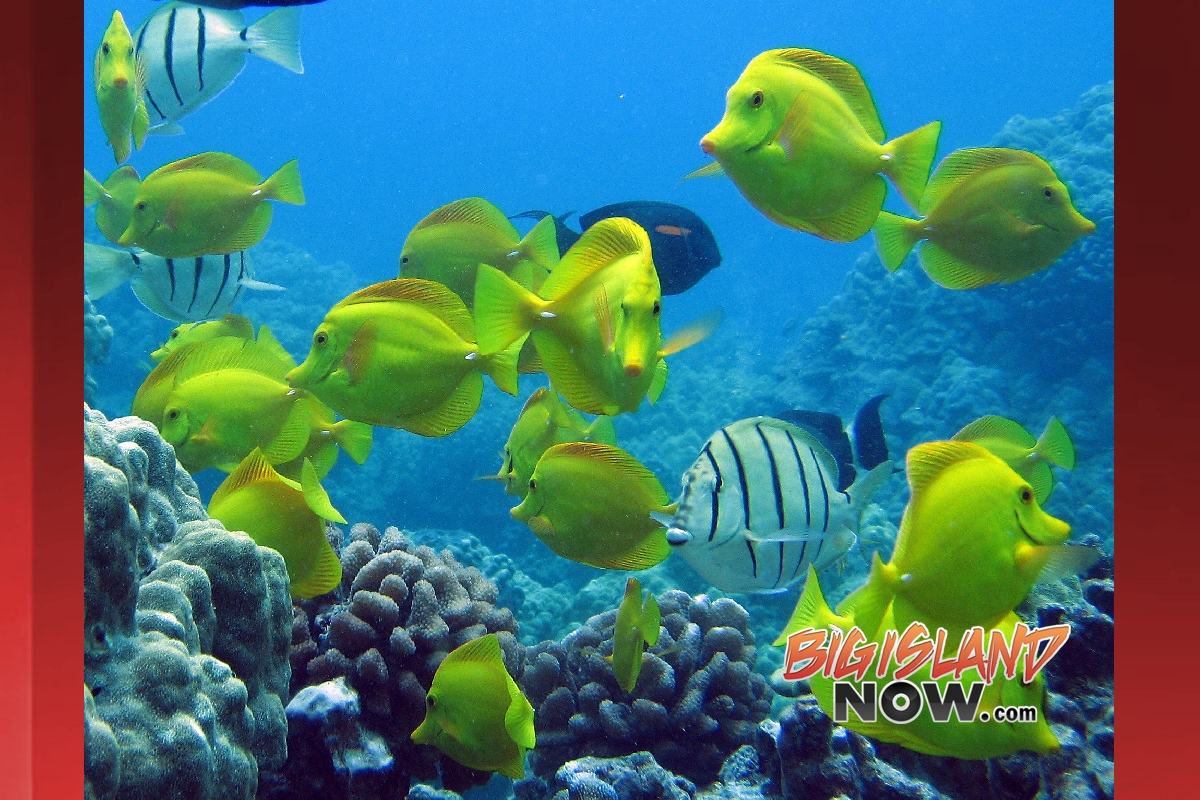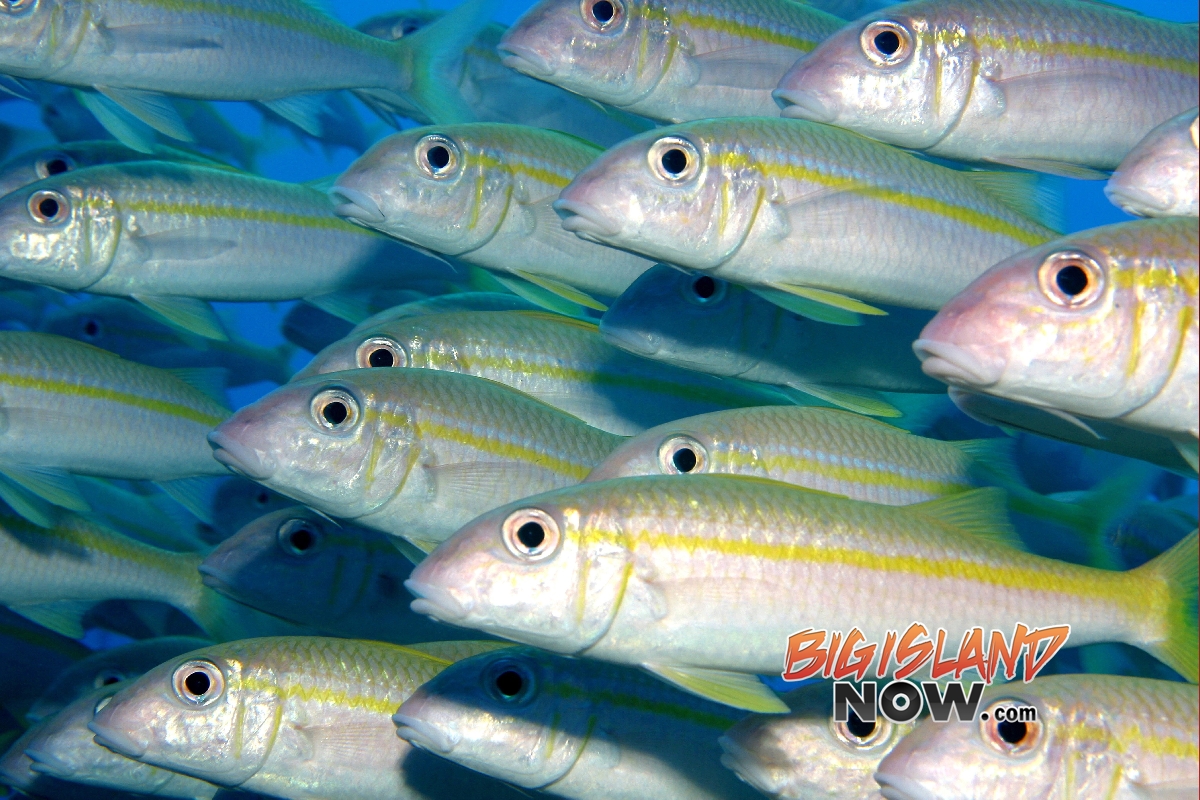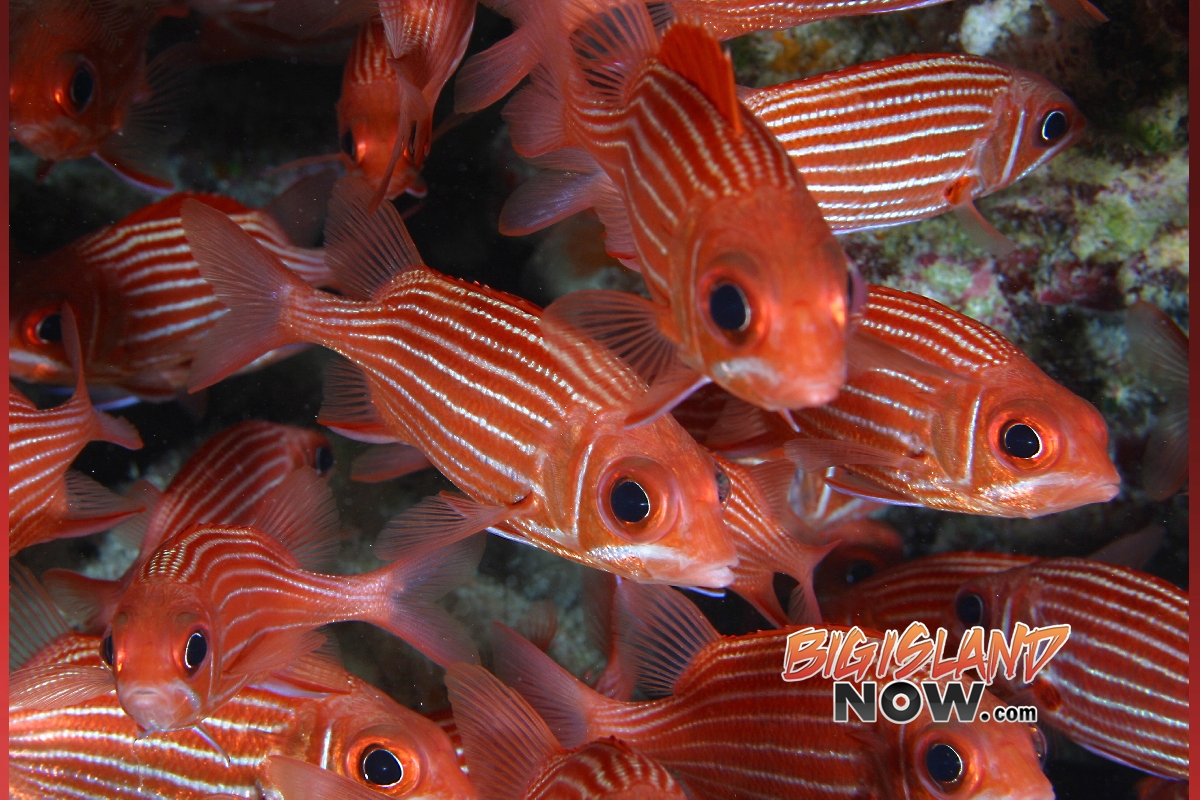Study Finds Overfishing Primary Cause of Reef Fish Decline in Hawai‘i
The primary cause of reef fish declines across the Hawaiian Islands is overfishing, according to the largest study of its kind ever published.
“This is the most compelling evidence that overfishing is the primary driver of reef fish declines in the main Hawaiian Islands, based on the most robust dataset ever put together for Hawaiʻi, and perhaps the world,” said Dr. Alan M. Friedlander, a University of Hawaiʻi marine ecologist and National Geographic’s Pristine Seas chief scientist. “The data was collected by multiple agencies and researchers since 2000, and is based on more than 25,000 in-water surveys.”
Friedlander is the lead author of a new research paper that compares fish density across the islands by moku, a traditional Hawaiian resource management designation that encompasses several ahupuaʻa.
Data from the study clearly show that the abundance of food fish species (those primarily caught for human consumption) is lower in populated areas, while there is no difference in the abundance of non-food fish species (those not generally targeted by fishing) between populated and unpopulated areas.
This finding strongly suggests that fishing, rather than other human influences such as pollution or habitat degradation, is primarily responsible for the observed differences.
“There have been arguments for decades about the impacts of other factors on reef fish populations, such as sediment, sewage and physical damage to reefs. But these threats would affect all fish similarly,” said co-author Dr. Eric Conklin, marine science director for The Nature Conservancy of Hawai‘i. “The only impact that would affect food fish and non-food fish differently would be direct fishing pressure.”
That does not mean, according to Conklin, that we can ignore the impacts of nutrients, sediment and other threats to our oceans. “With climate change impacts predicted to increase in coming years, it is more important than ever to manage all the factors stressing our reefs, including overfishing.”
The study found that off Oʻahu and Maui, where human population is greatest, the total amount of food fish species (e.g. uhu, ʻōmilu, kala) is a small fraction of those same species on remote reefs with small human populations (e.g. north Molokaʻi, Kahoʻolawe, Niʻihau).
What is eye-opening is that for non-food fish species (e.g. damselfish, butterflyfish, hīnālea), the total amount of fish is similar everywhere, including areas with high human populations and heavy fishing pressure.
The study also compared food fish populations between the Main and Northwestern Hawaiian Islands. According to study co-author Dr. Kuulei Rodgers of the Hawaiʻi Institute of Marine Biology, “We found that food fish biomass was nearly 3 times higher in the Northwestern Hawaiian Islands compared to the Main Hawaiian Islands, and nearly 10 times higher than off Oʻahu and parts of Maui.” Biomass” is a measure of the total weight of all fish in an area.
Comparisons of 35 highly-prized food fish species revealed that the abundance of 14 of those species in the main Hawaiian islands was less than a quarter of that in the Northwestern Hawaiian Islands.
According to Friedlander, as many as a third of Hawai‘i residents identify themselves as fishers, and fishing pressure is understandably much greater in areas with higher human populations.
“Many important food fish species have declined by more than 75% across the populated Hawaiian Islands. This rate of loss can’t persist if we want to continue fishing – and eating — reef fish in our islands,” said Friedlander.
The good news is that we can restore abundance to Hawai‘i’s nearshore fisheries. “Marine protected areas are a proven way to restore declining fish populations in Hawai‘i and around the world,” Friedlander said. “They need to be well designed, effectively managed and large enough to protect valued species, so that they can mature and produce large numbers of offspring.”
Another proven solution is community-managed fisheries, like the ones recently established in Hāʻena, Kauaʻi and Kaʻūpūlehu, West Hawaiʻi.
Community-based resource management areas can harbor fish biomass similar to that in no-take reserves, the paper said.
“This research also shows the value of managing fisheries at the moku (district) scale, the traditional unit of resource management, rather than the smaller ahupuaʻa (watershed) or larger island scales,” said co-author Rodgers.
“The ocean provides so much to the people of Hawai‛i, such as food security, recreation, and cultural identity, but the health of Hawai‛i’s marine environment is at a critical juncture,” said Friedlander. “This study suggests that future marine resource management in Hawai‛i might benefit from the long history of knowledge and past practices that sustained people and the ocean for centuries.”
The paper, which is available online, was just published in the peer reviewed journal Aquatic Conservation.
Co-authors include Friedlander, Mary Donovan and Kostantinos Stamoulis of the University of Hawai`i Fisheries Ecology Research Lab, Ivor Williams of NOAA’s Pacific Islands Fisheries Science Center, Eric Brown of Kalaupapa National Historical Park, Eric Conklin of The Nature Conservancy, Edward DeMartini and Kuulei Rodgers of the Hawaiʻi Institute of Marine Biology, Russell Sparks and William Walsh of the Department of Land and Natural Resources, Division of Aquatic Resources.
Sponsored Content
Comments















